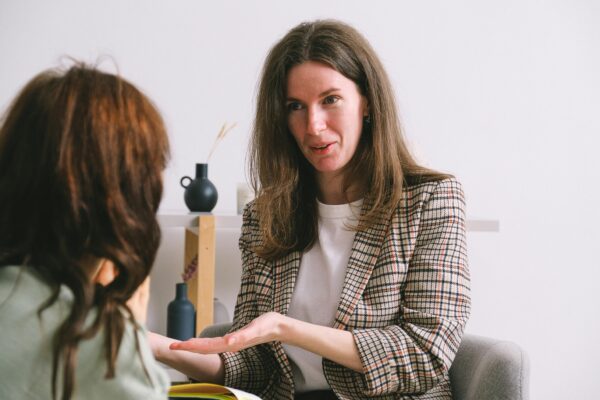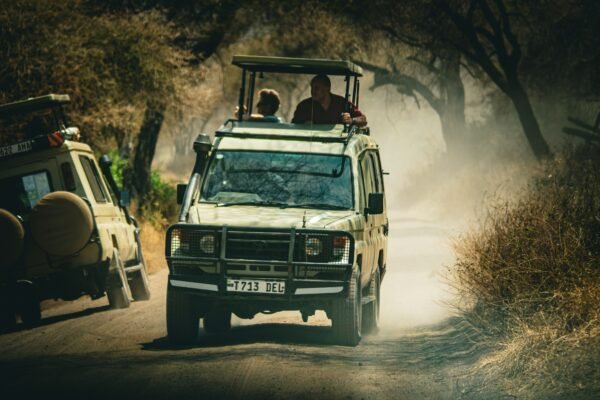
1 in 4 Gen Z Taking Mid-Career Gap Years – With Poor Mental Health Cited
Poor mental health motivates a fifth – and sobriety is on the itinerary – as more and more people swap full moon parties for finding themselves
Gen Z gap years are just as likely to be mid-career as they are pre-university, according to new research from leading youth travel experts KILROY as part of its Gap Year Travel Report 2024.

A survey of 1,000 Gen Z considering a gap year revealed that almost a quarter (24%) of trips are planned as a break from working– just as many as before beginning university – with men most tempted to jet set later in life (23%). It comes as KILROY’s new report reveals how Gen Z are travelling in the wake of a global pandemic and cost-of-living crisis.
Travel intentions have solidly turned towards health and wellbeing. Nearly a fifth (17%) of travellers opt to do so due to loneliness or mental health struggles, while a further half (50%) wish to grow as a person while doing so. Given that travel has a positive impact on mental health for nearly 9 in 10 (87%), it’s no surprise.
A focus on the self is a key driver in gap year plans; personal growth and self-development (37%) is behind only exploring the world (48%) when it comes to the appeal of travel.
As such, partying has slipped down the priority list (18%). Nearly three-quarters (70%) either won’t drink alcohol, or see little value in doing so, contradicting stereotypes. For the sober-curious traveller, read of the Sober Travel Guide created by KILROY.
While gap years typically see Gen Z heading for Asia, two-thirds (66%) are more interested in staying closer to home in Europe – perhaps understandable given that being homesick is a concern for a quarter (24%).
Australia, New Zealand and the Pacific Islands (54%) and North America (45%) follow Europe as desirable destinations, while India and the Subcontinent (20%), the Middle East (19%) and the UK (9%) are least desirable.
Top 10 gap year destinations for 2024:
- Europe
- Australia, New Zealand and the Pacific Islands
- North America
- Far East Asia
- Southeast Asia
- Africa
- Latin America
- India and the Subcontinent
- Middle East
- UK
Outdoor pursuits – like surfing, trekking and diving – are activities that appeal most followed by sampling local cuisine, exploring architecture and learning a new language.
Despite this desire to adventure, nearly 1 in 10 fear they won’t find authentic experiences (8%). Four in 10 (40%) have safety concerns – women (44%) more so than men (27%).
There’s a risk to social health, too. While isolation spurs Gen Z to explore, potential loneliness and not making friends sparks travel anxiety for some.
The main concern – for ALL potential gap year travellers – remains the lasting impact of the pandemic and cost-of-living crisis. Financial cost tops the list and is a worry for nearly two-thirds (64%), while around half (52%) will have to travel to cheaper destinations or for a shorter period (45%) as a result. A further two-fifths (39%) will have to work, wherever they end up; the crisis will have no impact for just 3%. Nearly half will even turn to AI tools for cost-saving tips (48%) and budget planning (45%).
It comes as KILROY has released its annual Gap Year Travel Report – examining the seismic shifts in gap year travel trends since the pandemic grounded flights and the cost-of-living crisis has seen many unable to save for holidaying.
“I travelled the world at 27 and became a movie star” – Dr Daveen Rattan
Daveen in Lisbon, Portgual
“I’ve always wanted to see the world but was motivated to go to university so I could train to become a doctor, which meant skipping the traditional ‘gap year’.
“I worked in a hospital during Covid-19 which, while rewarding, affected my mental health so I welcomed a break. By the time I came to travel, I was more confident than at 18, with a disposable income, the assurance of a fuller CV and friends that had relocated to different countries to visit (easing any loneliness fears or homesickness, while giving me the certainty I was having authentic experiences). It wasn’t about getting drunk and partying for me – I just wanted to be fully present.
“Europe was my priority. We’re so lucky to have so many different cultures on our doorstep – you can explore multiple cities (and even countries) in one week!
“But a trip to India led to an unexpected, once-in-a-lifetime experience – a leading role in a local film! I can’t put into words how incredible it was to immerse myself in my Indian culture – I felt so connected to my heritage and the country my family are from which was really special.
“My travels inspired me to see more of the world so I’m going to Paris next year to do a Masters. I’ll immerse myself in the French way of life while furthering my career so there’s a double benefit!”
Commenting on the report’s findings, KILROY travel expert Jessica Bollinger said:
“Sober-curious travelling seems to be dominating travel trends in 2024; it’s no surprise given the clear emphasis from Gen Z on their physical and mental health and wellbeing. With drinking often comes ‘hang-xiety’ – a dreaded combination of a hangover and anxiety – so Gen Z are making conscious decisions this year.
“The impact of the pandemic and cost-of-living crisis is driving a need for time to reflect and grow as a person. Should the trend continue, we could expect to see gap years in later life become popular as more and more people take career breaks to travel the world.”
Hollie Youlden, Marketing Manager at KILROY, reflects on her gap year experiences:
“It was during my second gap ‘year’ that I truly fell in love with travel and realised the travel industry was where I wanted to build my career. A two-year working adventure in Australia, followed by an incredible backpacking tour across Southeast Asia and India, cemented what I knew would be a life-long love of travel.
“Having started my career in the travel industry 12 years ago, I’m still here—and still loving every moment of it. The best part? It hasn’t stopped me from travelling. In 2022, I took a third gap year to backpack around Latin America, an experience that reignited my passion once again and drew me back into the industry after a brief hiatus during the pandemic.”














































